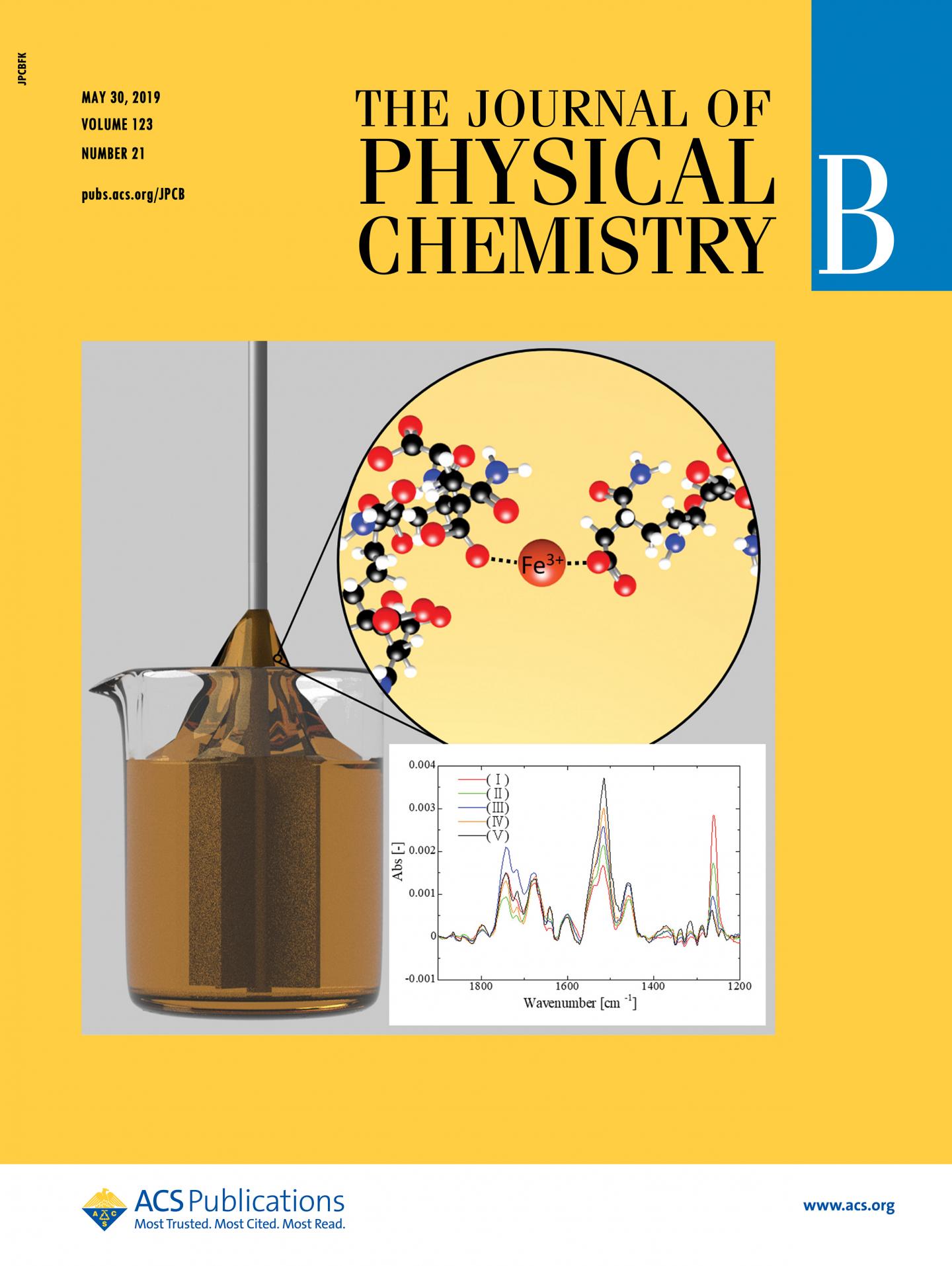
Credit: FIGURE ADAPTED with permission from the cover of J. Phys. Chem. B 2019, 123, 21, 4587-4593. Copyright © 2019 American Chemical Society
Before and after comparisons don’t tell the full story of chemical reactions in flowing fluids, such as those in chemical reactor, according to a new study from a collaboration based in Japan.
The researchers published their paper on May 6 in the Journal of Physical Chemistry B, a journal of the American Chemical Society. The results were featured on the journal’s cover.
The team examined how a solution of dissolved polymers changed after the addition of Fe3+ solution. These types of solutions are used to better control variables in several fields, including manufacturing. In automobile manufacturing, for instance, the solutions help achieve a thorough evenness of paint coverage and control over how much a material expands or contracts under various temperatures.
Traditionally, researchers examine a solution before a reactant, such as Fe3+ solution, is added, and again after the reaction takes place.
“In other words, if a fluid property such as the viscosity of the solution is higher after the reaction than before, we would expect that an increase in viscosity occurs from the reaction during flow,” said Yuichiro Nagatsu, corresponding author on the paper and an associate professor in the Department of Chemical Engineering at Tokyo University of Agriculture and Technology.
Nagatsu and the team discovered that the before and after comparison isn’t as reliable as previously thought. They observed an increase in viscosity in the solution during a chemical reaction to Fe3+, but the solution had thinned back out by the end of reaction. They confirmed their chemical observations with infrared spectroscopy, which allows researchers to examine microscopic interactions without extensive preparation that could further disturb the sample.
Flow dynamics account for microscopic changes within these chemical reactions – molecules stripping other molecules of electrons and the like – that fundamentally change the composition of the solution. However, viscosity is known as a macroscopic change – it describes the solution as a whole rather than the individual interactions on the microscopic level.
It’s incredibly unusual for such a solution to shift through such macroscopic phases only to lose the characteristics by the end of a chemical reaction, according to Nagatsu. This understanding could have major implications across industrial, environmental, and biological fields.
“Our ultimate goal is to establish a new research area to understand chemically reacting flow involving the diagnosis of molecule structure,” Nagatsu said. He also noted that the plans to develop a novel method to control fluid dynamics through their new understanding of interactions.
###
This work was supported by a grant-in-aid for scientific research from the Japan Society for the Promotion of Society (JSPS KAKENHI Grant No. 22686020).
Other authors include Toshimasa Ueki and Satoshi Tagawa of the Department of Chemical Engineering at TUAT, and Jun Iijima, of the Division of Chemistry in the Department of Liberal Arts and Sciences at Nihon University School of Medicine.
For more information about the Nagatsu laboratory, please visit http://web.
About Tokyo University of Agriculture and Technology (TUAT)
TUAT is a distinguished university in Japan dedicated to science and technology. TUAT focuses on agriculture and engineering that form the foundation of industry, and promotes education and research fields that incorporate them. Boasting a history of over 140 years since our founding in 1874, TUAT continues to boldly take on new challenges and steadily promote fields. With high ethics, TUAT fulfills social responsibility in the capacity of transmitting science and technology information towards the construction of a sustainable society where both human beings and nature can thrive in a symbiotic relationship. For more information, please visit http://www.
Original publication
Unpredictable Dynamics of Polymeric Reacting Flow by Comparison between Pre- and Post-Reaction Fluid Properties: Hydrodynamics Involving Molecular Diagnosis via ATR-FTIR Spectroscopy
Toshimasa Ueki, Jun Iijima, Satoshi Tagawa, Yuichiro Nagatsu
The Journal of Physical Chemistry B 2019 123 (21), 4587-4593
DOI: 10.1021/acs.jpcb.9b02057
Contact
Yuichiro Nagatsu, Ph.D.
Associate Professor, Department of Chemical Engineering, TUAT, Japan
e-mail: [email protected]
Jun Iijima, Ph.D.
Assistant Professor, School of Medicine, Nihon University, Japan
e-mail: [email protected]
Media Contact
Yutaka Nibu, PhD
[email protected]
Related Journal Article
http://dx.




